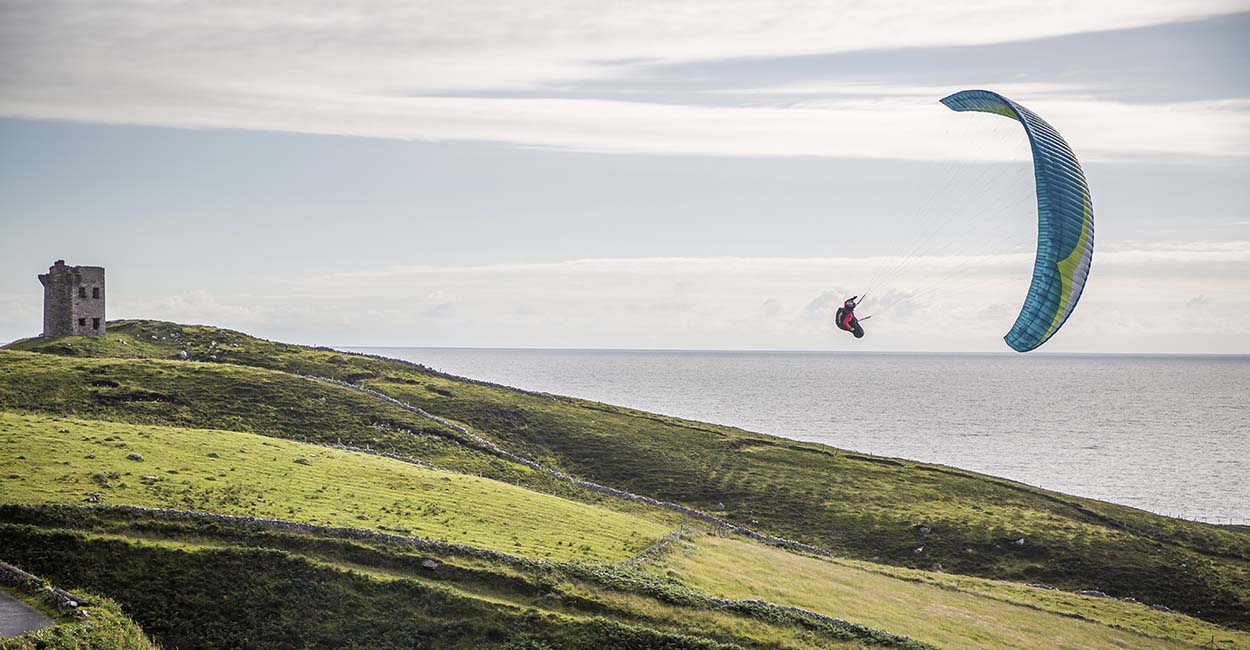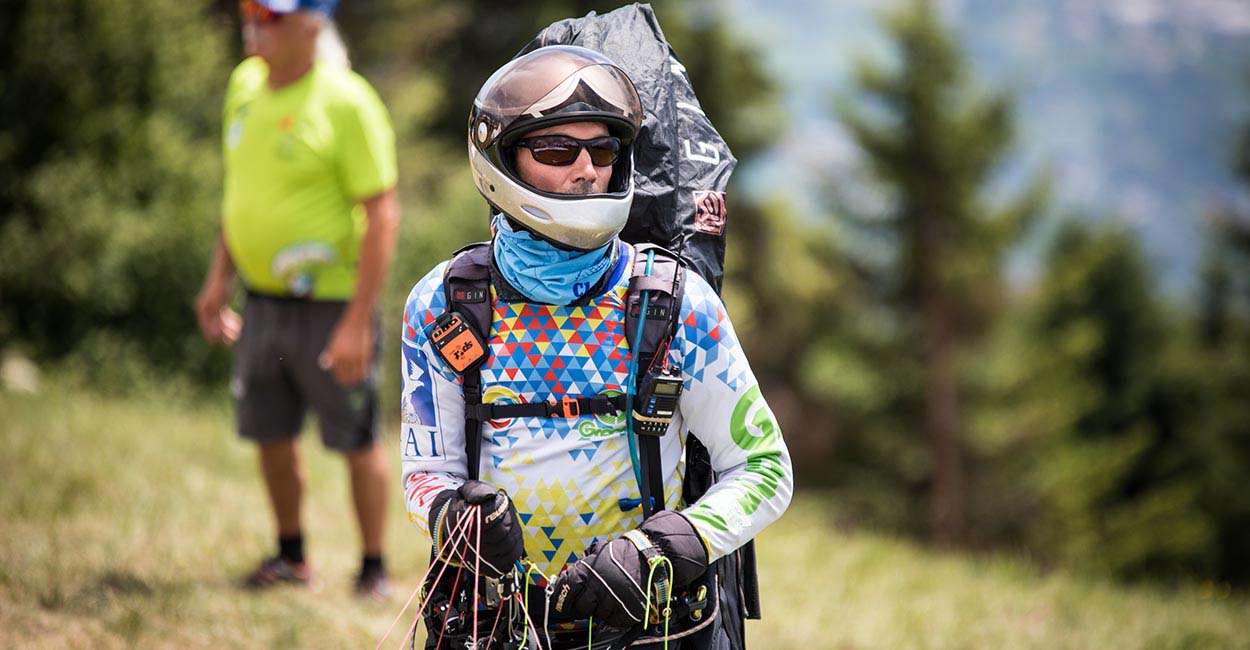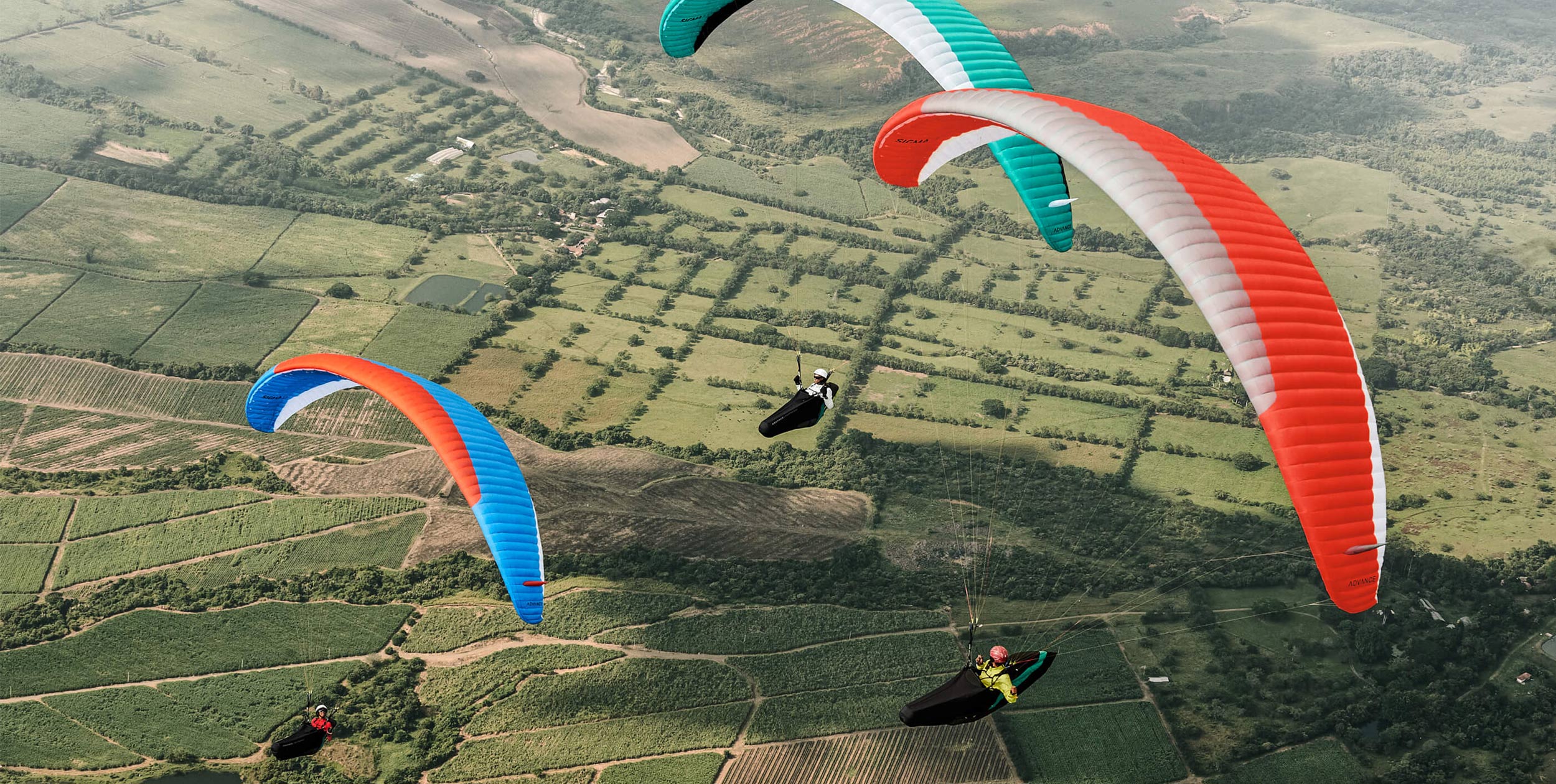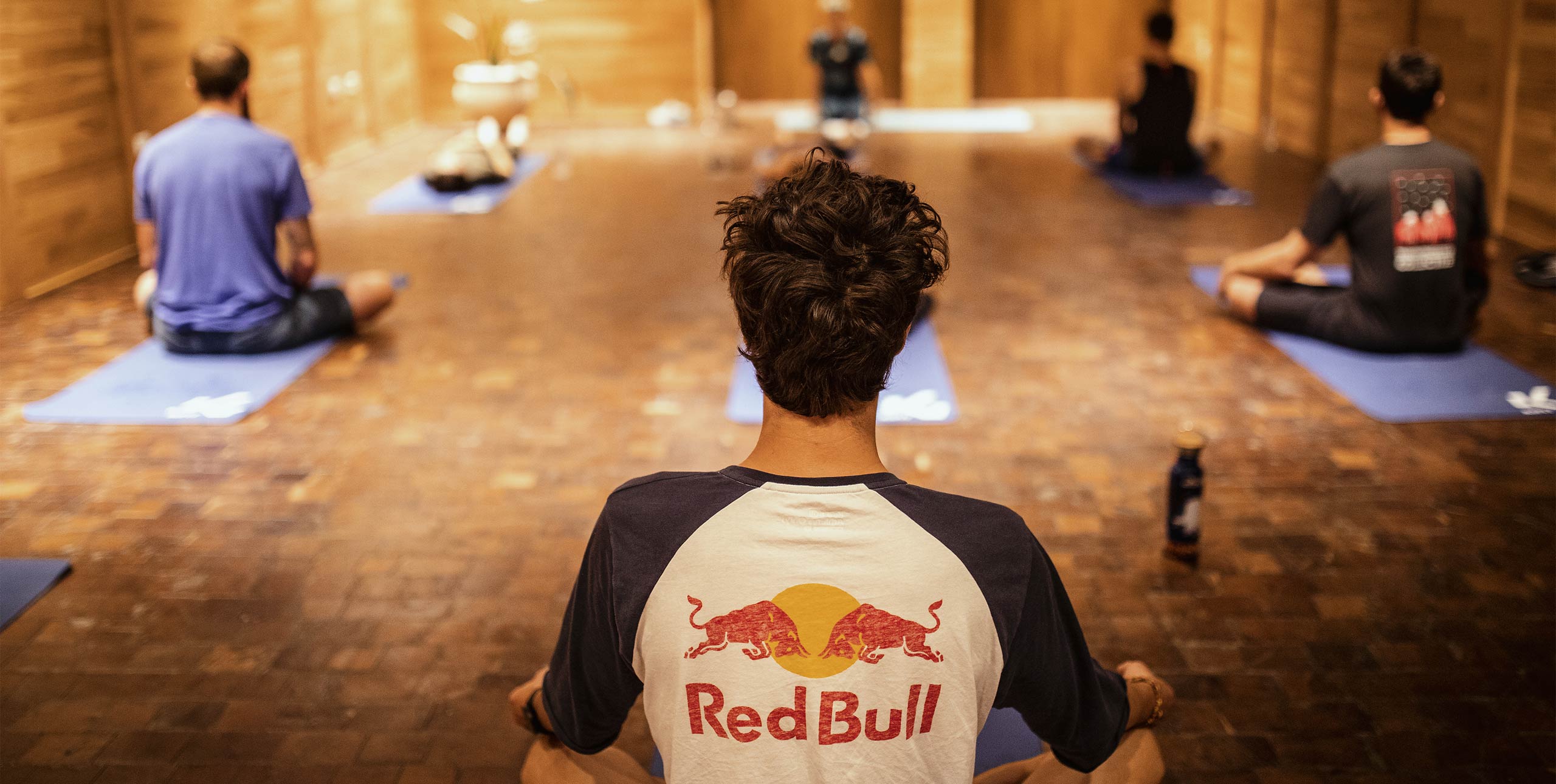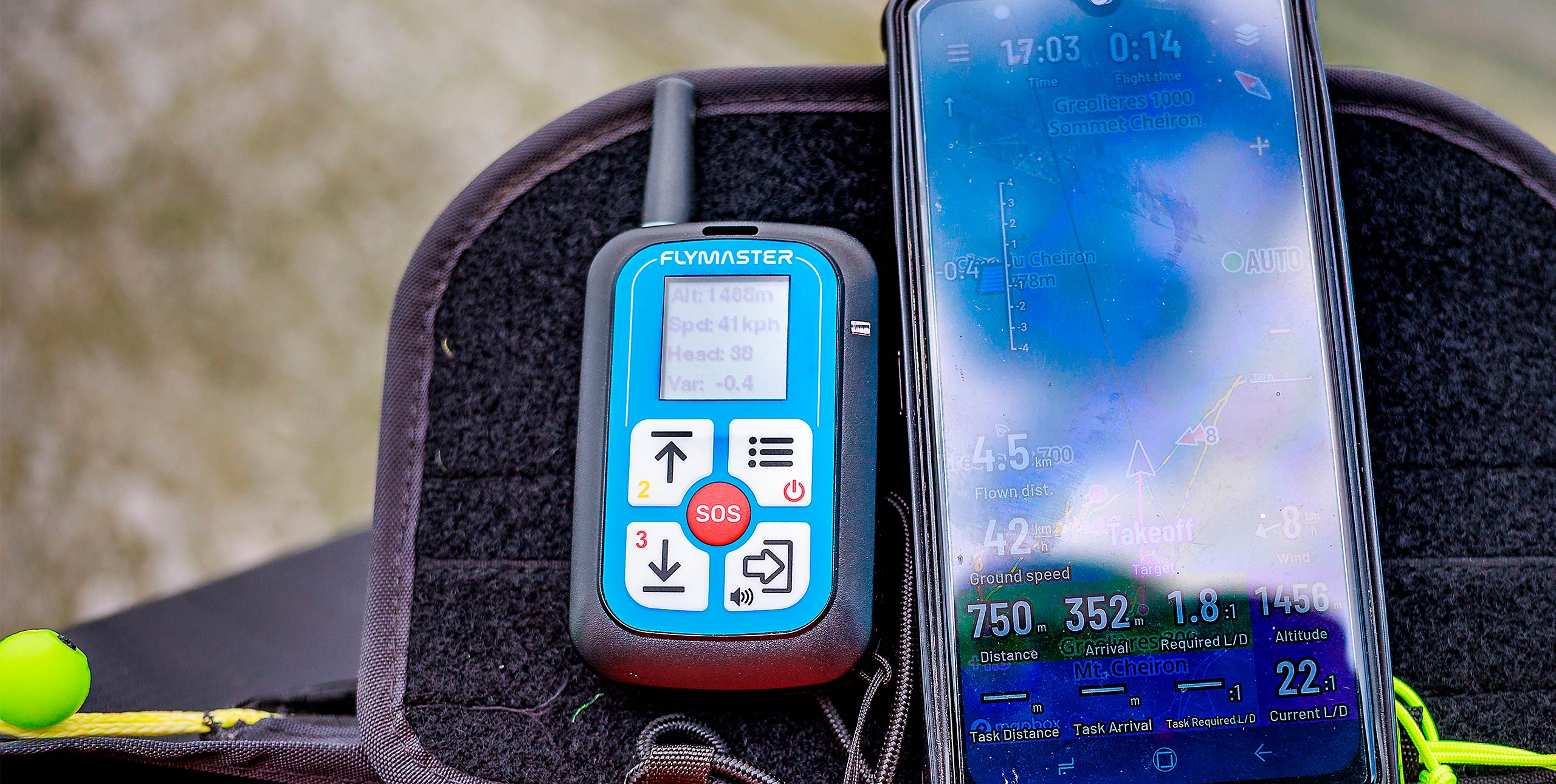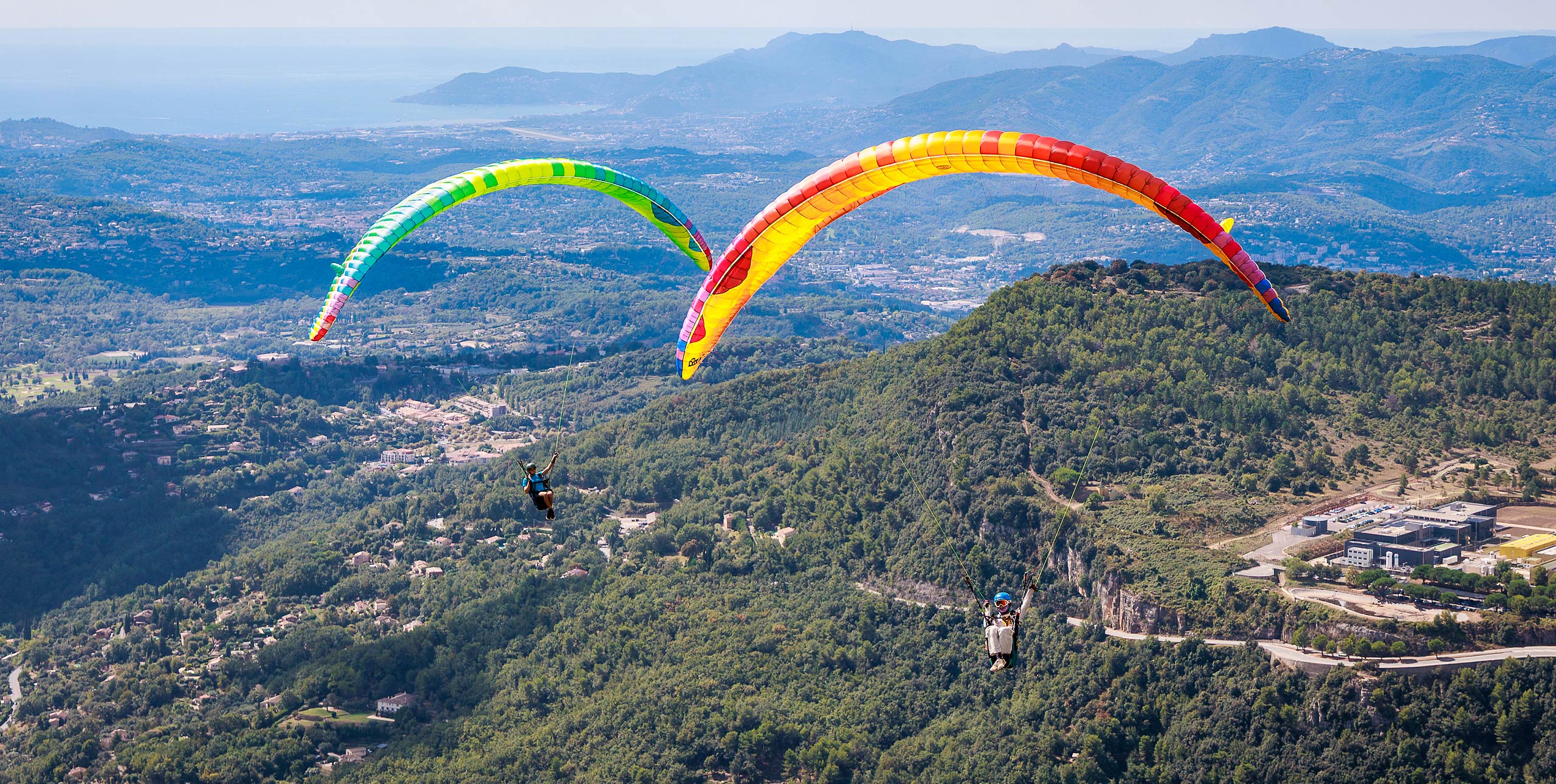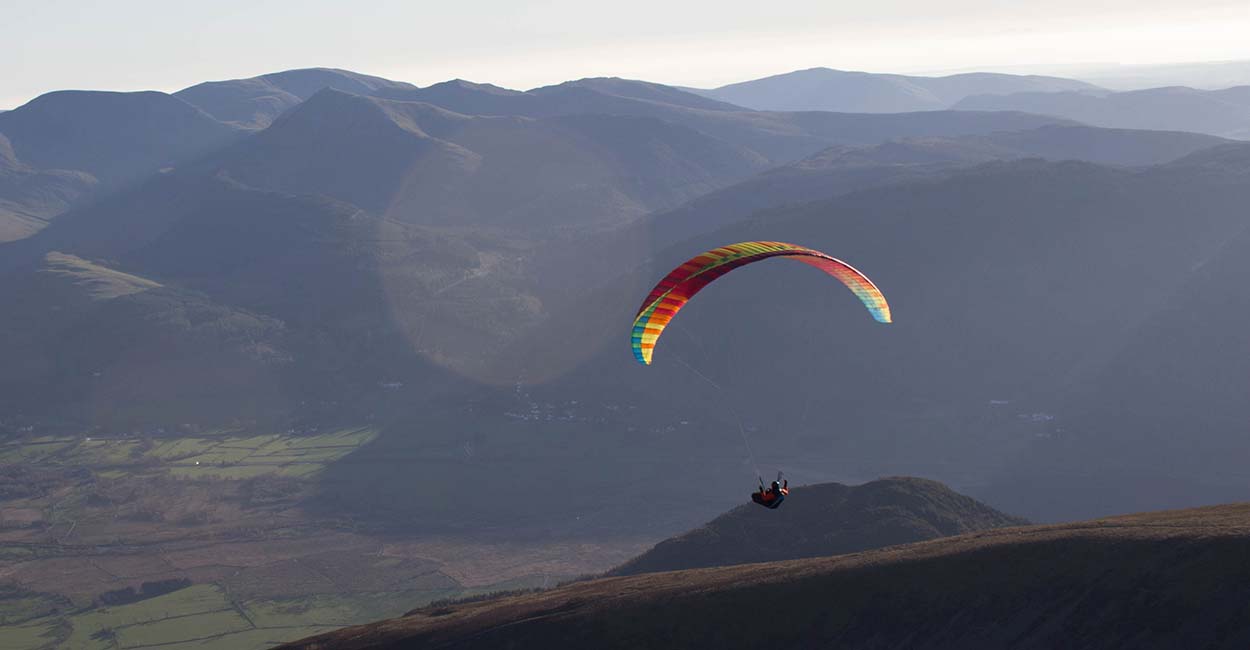
The first thing to say is that for your first soaring flights you should follow the advice of your instructor closely. They will know the site you are at, the equipment you are flying, and most importantly the level you are at.
What follows then are some general principles plus a few real-world tips about learning to soar and stay up using ridge lift.
First up, how do you know if it is soarable? Nobody wants to take off and go down, which is why on nil- to light-wind days you will often see groups of pilots waiting on launch. Only a few brave souls make small “bunny hops” to test the air before landing again. They are waiting for the wind.
If you’re on launch and facing out and there is a nice breeze on your face then it is probably soarable. If there are birds and gliders in the air and they are staying up, then it’s definitely soarable!
A good tip on a good soaring day is to mentally mark what your local weather forecast and other weather information tells you. Your TV forecast might have said it was forecast 10km/h, or a local airport might be reporting 8km/h. On the hill it might be 15-20km/h on launch, so remember that. The next time the TV forecast says “10km/h” you will think, “Aha! That means a great soaring day!”
The key then is to get prepared and get in the air, so you can enjoy the good conditions too. There will be wind, so you will be reverse launching. This is where ground-handling practice will really pay off: it makes you be confident in your ability to manage your wing in a wind, so you will not be worried about being dragged or otherwise losing control of the wing.
Set your equipment up away from the front of the hill, which will be the windiest part of the slope. If the hill is flat, go back a few metres until you are in the shadow of the wind, where it should be calmer. Or find a dip. Lay your glider out parallel to the wind, that way it won’t inflate.
When you have done your equipment checks and are clipped in, then bundle your wing and move towards take off. If there are other pilots launching, watch where they are launching from. Who is doing it well and who is struggling? Go where pilots are making it look easy. You don’t want to pull the glider up a long way back and then have to struggle forwards, walking and ground-handling into wind.
When launching, prepare to be in the air quite quickly. You won’t need to run as fast as you would on a light-wind day. That means you should have your flight plan in mind already: you will know which direction you plan to fly. It is not a fixed-rule for all sites, but it is often best practice to launch and fly first into the wind. (This assumes the wind is slightly off the slope; it is very rarely square-on).
The reason for this is that you will be flying more slowly, and you will have more time to get into your harness and get comfortable in the air.
With your final checks complete – check in front, behind and above for pilots and other air traffic – manage your reverse launch with confidence, turn, and take-off.
Your first “beat” along the hill will, as mentioned, most likely be into wind. Keep going, moving along the hill and also slightly out and away from the hill. You want to escape the compression zone around take off, where the wind is squeezing through, and get into the lift band. You will feel this and see it too – the ground will drop away and you’ll feel it in your stomach. If you have a flight instrument or vario, it will make a noise: beep, beep, beeeep!
On a strong wind day the lift band will extend much further out from the hill and take you higher than you first might expect. On a light wind day the lift band will be narrow and you will be lower.
The key is to recognise what conditions are like, and then to apply your skills to meet those conditions.
The technique in ridge soaring is to fly figure-of-eights in smooth circuits while staying in the lift band. You do not want to fly 360-degree full-circles when ridge-soaring as this involves a very fast downwind leg that can put you behind the hill or even see you hitting the hill if you get it wrong. Stay smooth and make all your turns away from the hill.
With a decent amount of situational awareness, soaring is easy to do when the lift band is wide and there are no other pilots. But when the lift band is narrow, the wind is light, and the site is crowded, then it can become difficult and intimidating.
If you find that is the case, then there is no shame in either not launching, or turning and flying out to the bottom landing field, or slope-landing. Keep yourself safe and comfortable, while also being considerate of others.
As part of your training you will cover, or have covered, the Rules of the Air. These are important to know and very important to apply when ridge soaring as other pilots can be close by.
Assuming good lift, explore the lift band and the site while flying figures-of-eight. Take note of what the wind is doing all the time. Notice if your flight has a downwind and into-wind leg. The downwind leg will be faster, and you will cover more ground more quickly, so you will need to think about turning sooner. The into-wind leg will be slower so you may need to think about where your hands are and how high to hold the brakes, to allow the glider to fly faster.
Stay aware of where you are in relation to the top of the hill and back of the hill too. You want to stay out front, away from any potentially dangerous rotor curling over the edge or behind the hill. If the wind gets stronger and you feel you want to come down, push forwards using big ears and speed bar.
But for now, enjoy this new eagle-eyed position. Don’t get stuck staring at the numbers of your flight instrument, or focus on anything beyond simply flying beats, feeling and using the lift, and staying up in the air. Keep your movements smooth and controlled, raising one brake as you pull down on the other. Use weight-shift to help you turn. Try not to be radical or jagged in your inputs or movements.
Keep a good eye out for other pilots – look up, behind and below you – and stay clear of each other. Watch the windsock and the weather and note any changes in the wind direction or strength. Make decisions based on what you see happening around you at the time, not what you wish might happen or what happened last time you flew.
Push out front, get high in the lift band, and enjoy yourself!







